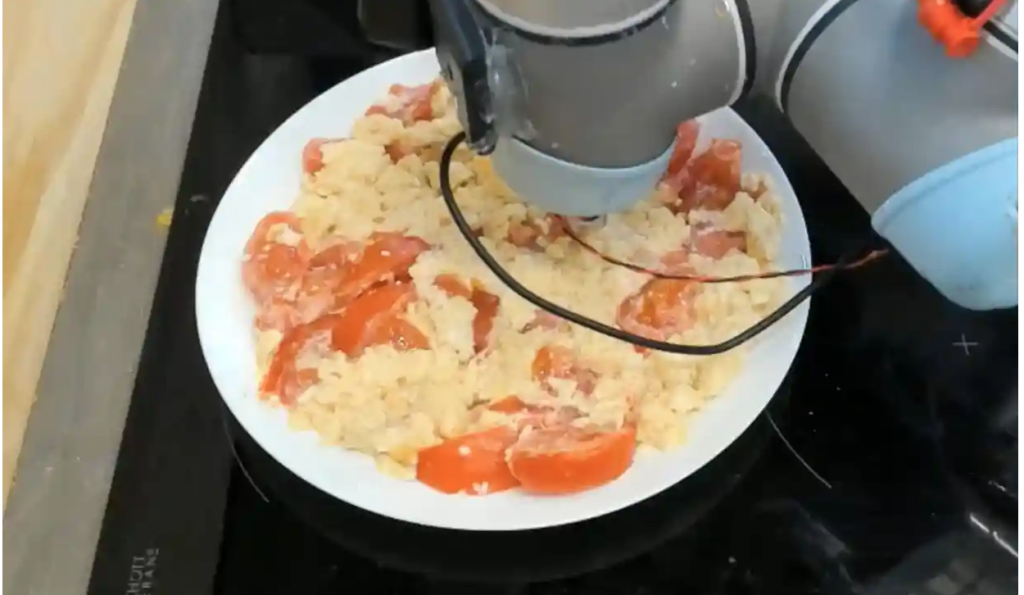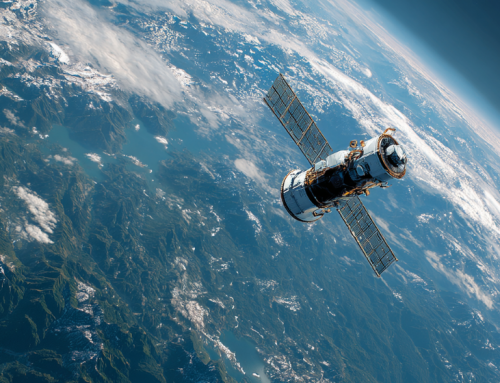
The robot assessed nine variations of scrambled eggs and tomatoes at three stages of the chewing process. Photograph: University of Cambridge/PA
Salinity Sensors Via Robotics Seek to Imitate Taste Buds in Cambridge Experiments
Researchers at Cambridge University are passionate about combining AI, robotics, electronic sensors, and food. Yes, they have announced their creation of a robot that not only cooks your meal but it will taste before serving. At least that’s what the article says written by Geneva Ahbdul for theguardian.com.
“If robots are to be used for certain aspects of food preparation, it’s important that they are able to ‘taste’ what they’re cooking,” said Grzegorz Sochacki, one of the researchers, from Cambridge’s department of engineering.
To map human taste, the researchers trained the robot chef to make omelets. It then tasted nine variations of scrambled egg and tomatoes at three stages of the chewing process. A salinity sensor attached to the robot’s arm provided readings as the robot prepared dishes. To imitate the chewing progress, the team blended the egg mixture and had the robot test the dish again.
Sochacki says it can do much more than just say a dish is too salty, or not salty enough – for example, it is capable of deciding whether more mixing is needed, or other ingredients.
Here take a look:
Recently we at Seeflection.com have reported on many new approaches that are being taken to link robotic AI with human activity by mimicking the senses that humans use.
Having AI judge the taste of the food might be chemically or electronically possible, but the way people chew their food and savor the taste before swallowing is unique for every person. It’s hard to imagine how even the best robotics or algorithms can replicate the same enjoyment humans receive by preparing the food and sitting at a table and sharing it with good company. But maybe it can tell if there’s too much salt or not enough.
read more at theguardian.com







Leave A Comment